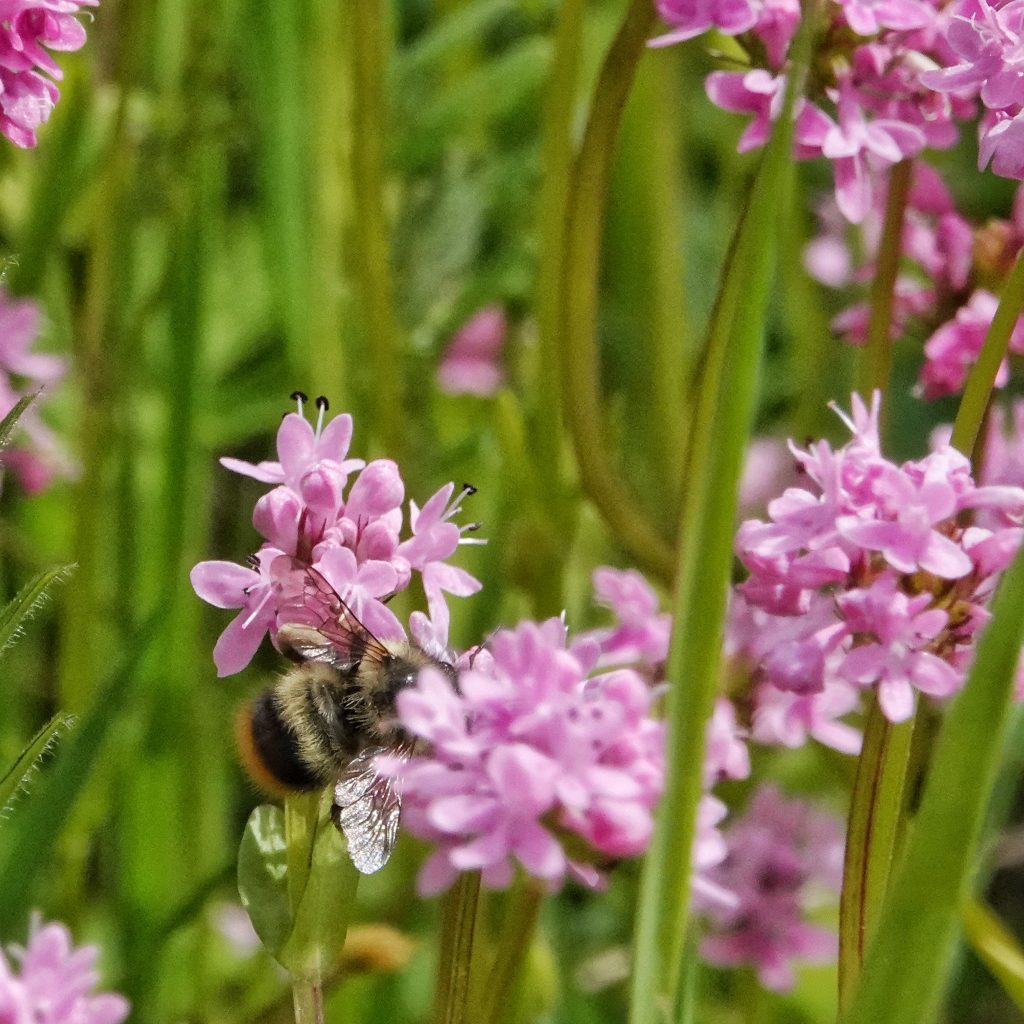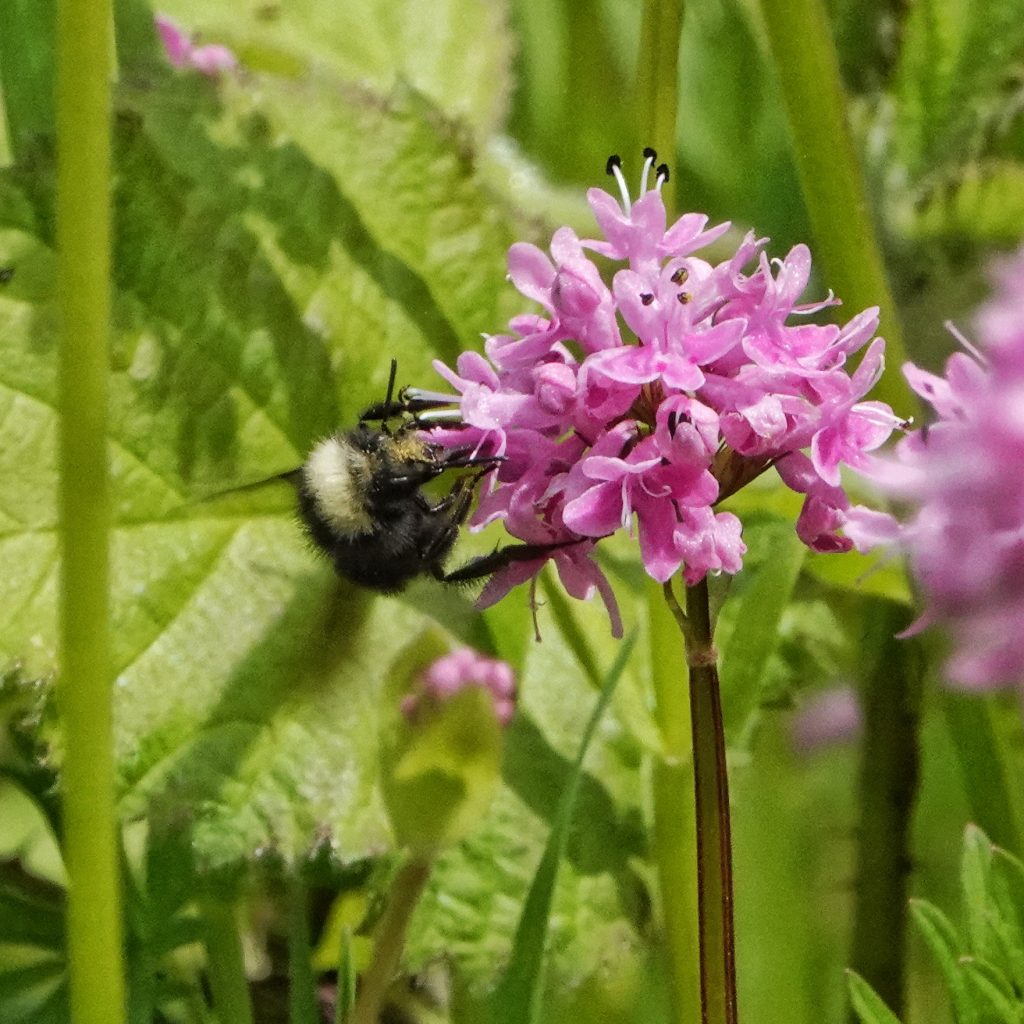
One of the joys of spring is finding large patches of Rosy Plectritis brightening up the meadows with their vibrant pastel colors, and wafting away their sweet scent. On sunny, or even just moderately warm days, they are abuzz with various bees, flies, butterflies, and diurnal moths, an ever changing swirl of hungry pollinators seeking out their apparently delicious nectar and pollen. To sit amid a patch of Plectritis congesta is to feel the energy of vernal resurrection, and to know that spring is really here, even if, as has been the case this year, it hasn’t roared in on the schedule to which we think it should adhere.

I used to think I could spot a patch of Rosy Plectritis from fifty yards away, but I recently found out that a subspecies had been raised to full species status. Now I need to be close enough to determine whether the flower corollas are more than 4mm wide, because if they are less than 3.5mm wide, and have very little scent, then the plant is probably the newly elevated Plectritis brachystemon. Another change in taxonomy is that molecular analyses indicates that Plectritis spp. should be placed in Valeriana, which is, at least for the moment, still in the family Valerianaceae, where Plectritis has been for as long as I’ve been looking. But there is a movement afoot to incorporate Valerianaceae, Dipsacaceae, Adoxaceae, and Linnaeaceae into a broadly defined Caprifoliaceae, which may simplify things long term, but will certainly confuse them first.
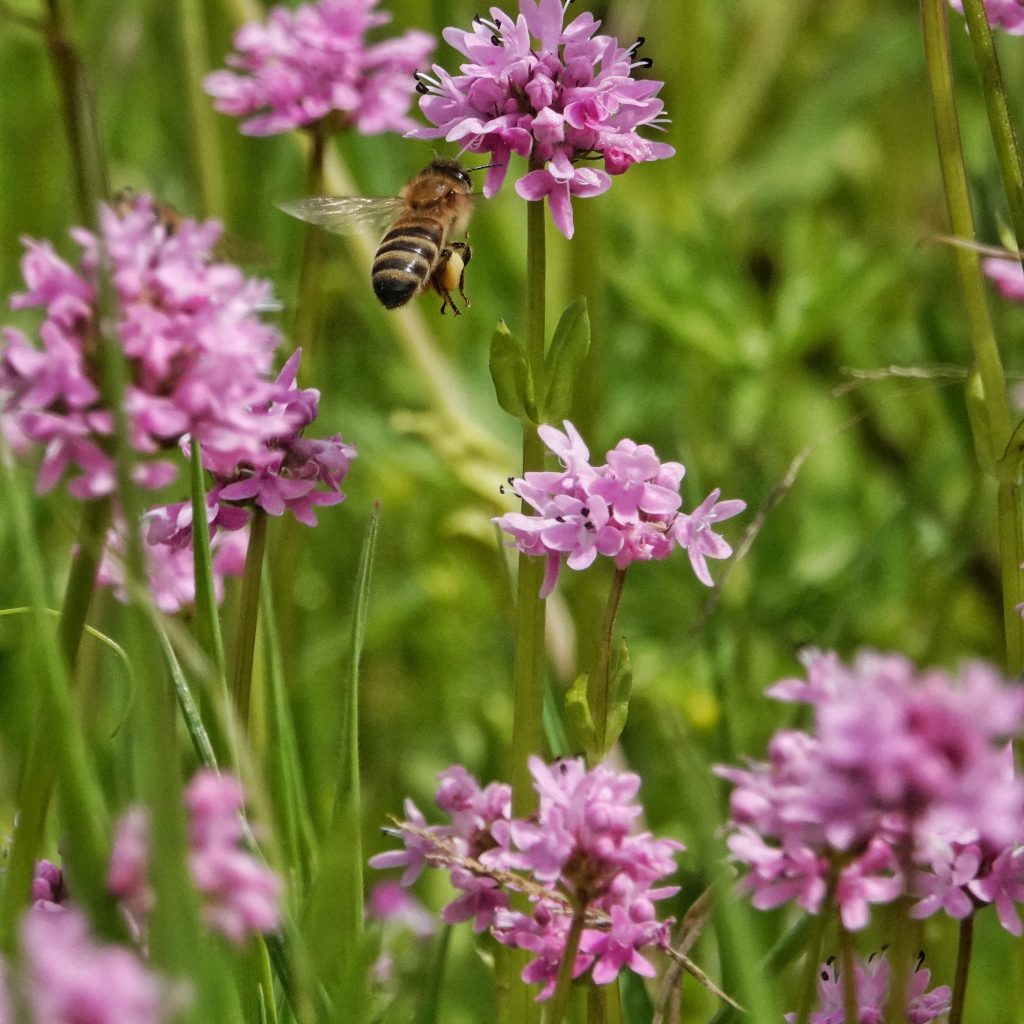
It doesn’t appear that indigenous human cultures found uses for this native plant, but deer certainly do, to the point that their presence or absence determines some morphological traits. In areas where Rosy Plectritis is frequently browsed it produces plants that are much lower to the ground, with more branches and wingless fruits, as well as flowering later in the year. What was particularly interesting to me was that this study (Skaien/Arcese; 2022) indicates that the switch to deer resistant, or back to the ‘browse naive’ form with taller, unbranched stalks and winged fruits, can happen in just 2-16 generations.
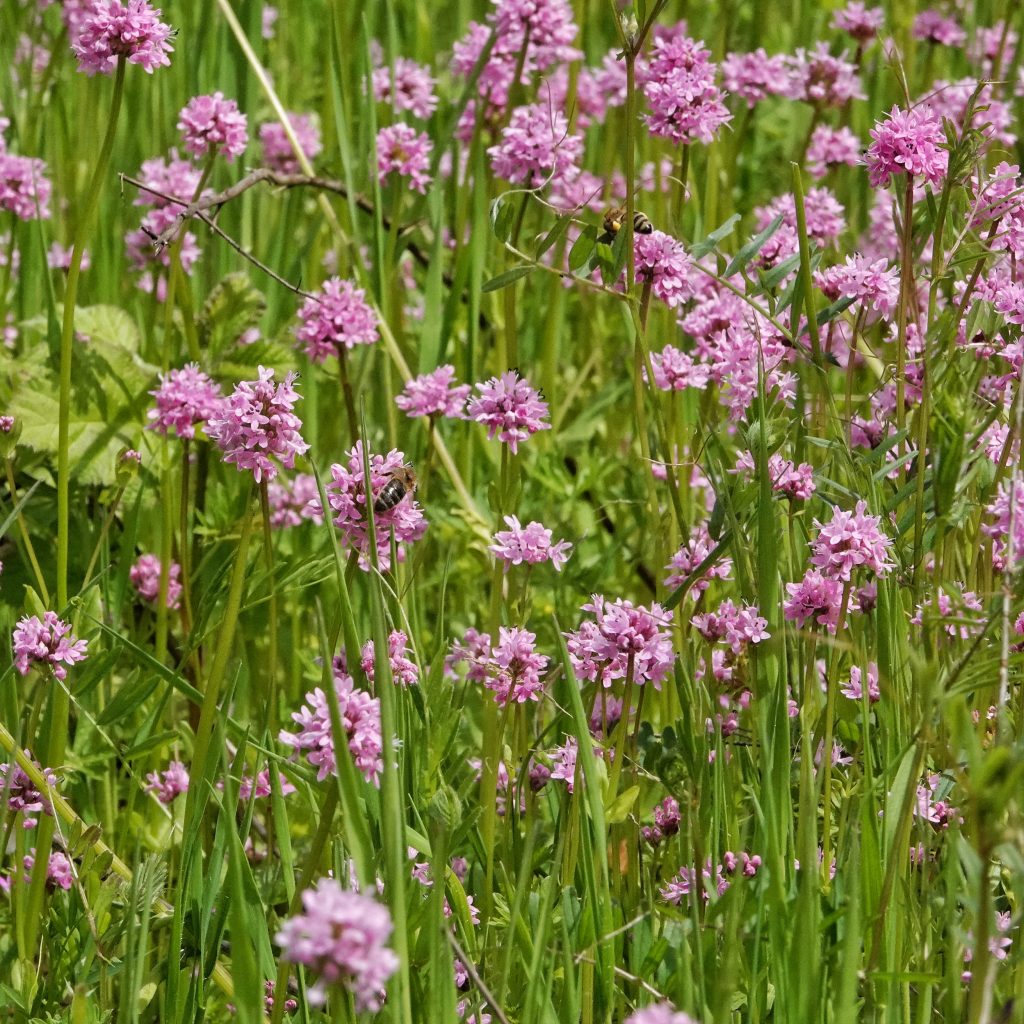
Description– Medium sized (4-24” tall) plant that often grows in large patches, with a dense, usually spherical to cylindrical inflorescence of small, fragrant, pink to purple flowers; leaves are opposite and usually only 3-5 pairs; lower leaves oval on short stems, upper leaves oblong and sessile; stems and leaves hairless; flowers are 4-9.5mm wide, lower 3 lobes much larger than the upper 2; flower spur only half as long (or less) as flower tube.
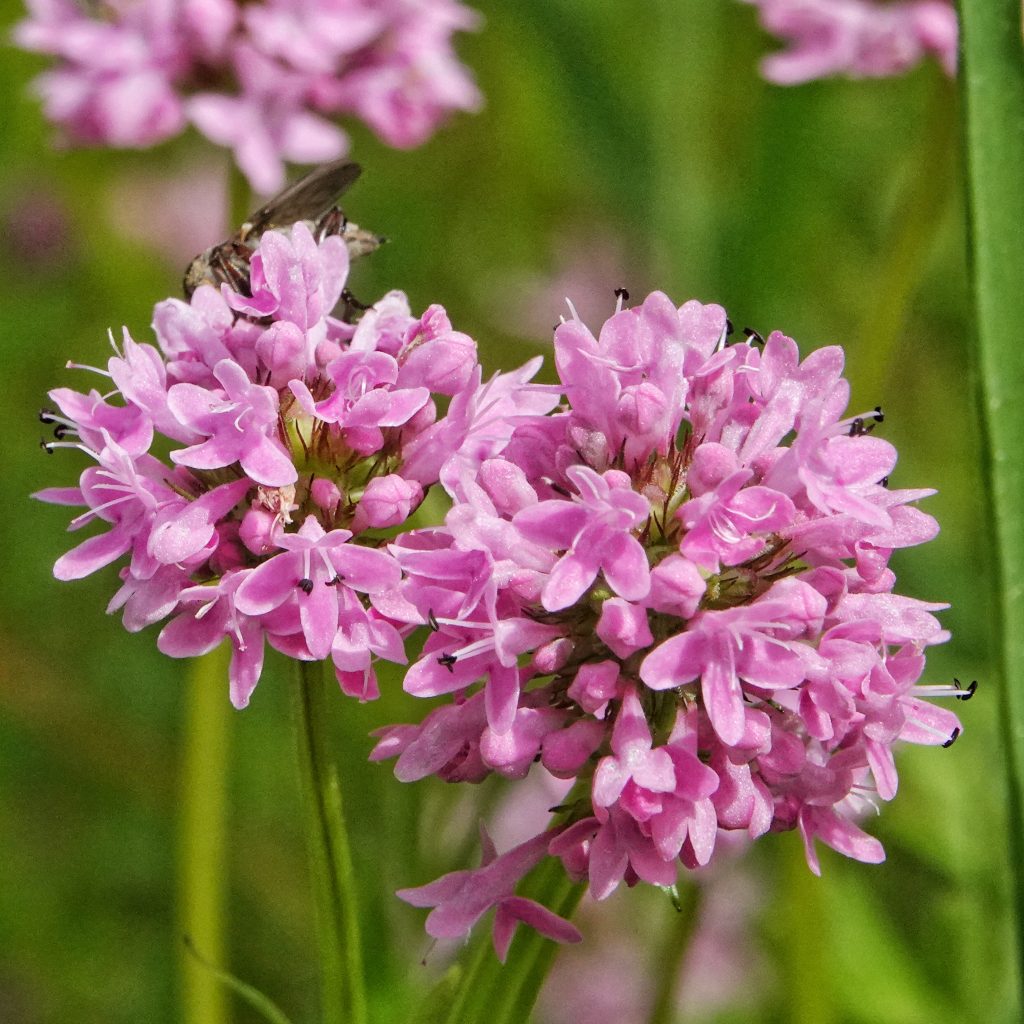
Similar species–Plectritis brachystemon has flowers less than 3.5mm wide, little or no scent; P. ciliosa has spur as long as flower tube, only found in eastern Columbia River Gorge, and in sw Oregon/nw California in our region; P. macrocera has symmetrical flowers.
Habitat– Vernally wet to moist meadows, open slopes, prairies, balds and fields, up to 5,000’ elevation.
Range-Native to West Coast North America; primarily found west of the Cascades, with some widely scattered disjunct populations in montane areas on the eastside.
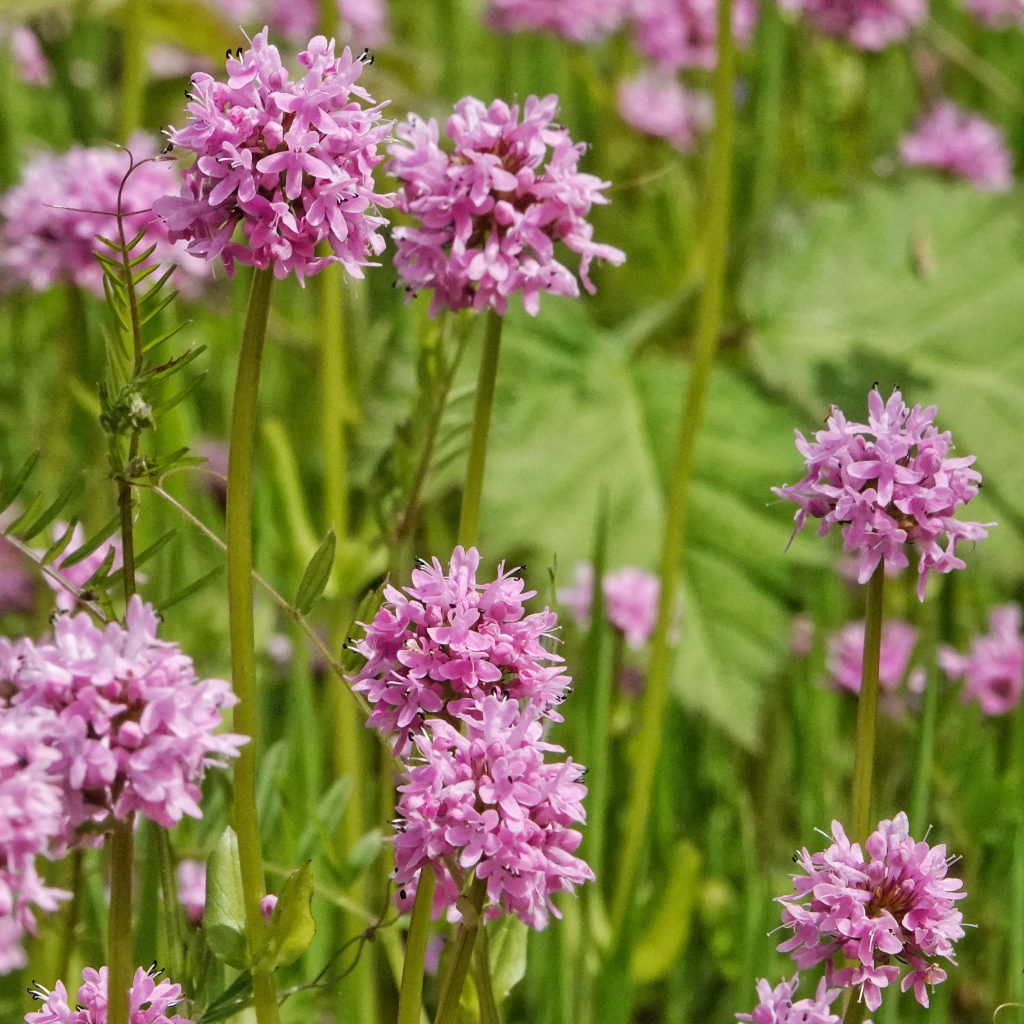
Reproductive timing-April through June, depending on weather and elevation.
Eaten by– The only insect I can find that is said to eat this plant is aphids, and some gardening sites say it has no other known pests; deer and voles are known to browse this species; there are some checkerspot butterflies that may occasionally use it as a larval host; bumble bees, honey bees, dance flies, syrphid flies, and a plethora of other pollinators visit them for nectar and pollen.
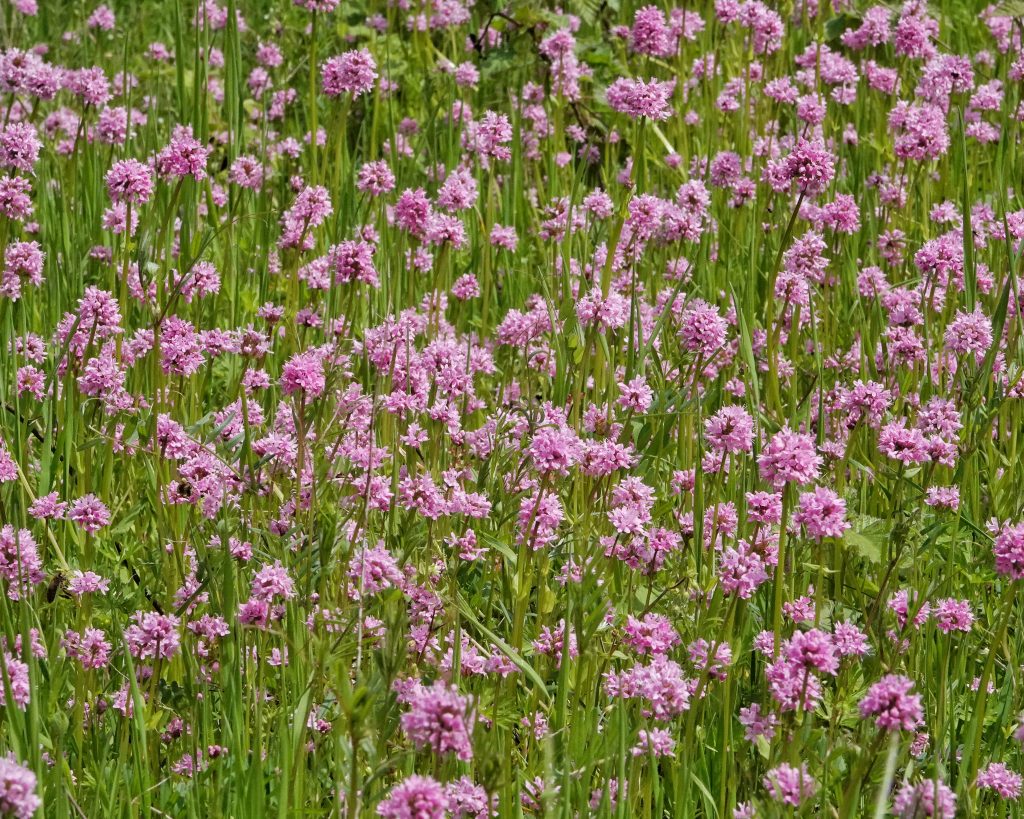
Etymology of names– Plectritis comes from either the Greek word for ‘plaited/twisted’, which may refer to the complex inflorescence, or it may come from their word for ‘spur’. Considering how many Plectritis have spur somewhere in their common name, the latter seems more likely. Valeriana, the genus that it is likely to be placed in, is possibly from the Latin word for ‘to be strong’, though I don’t know to what that may refer. The specific epithet congesta comes from the Latin word for ‘dense/thick’, and refers to the congested inflorescence.
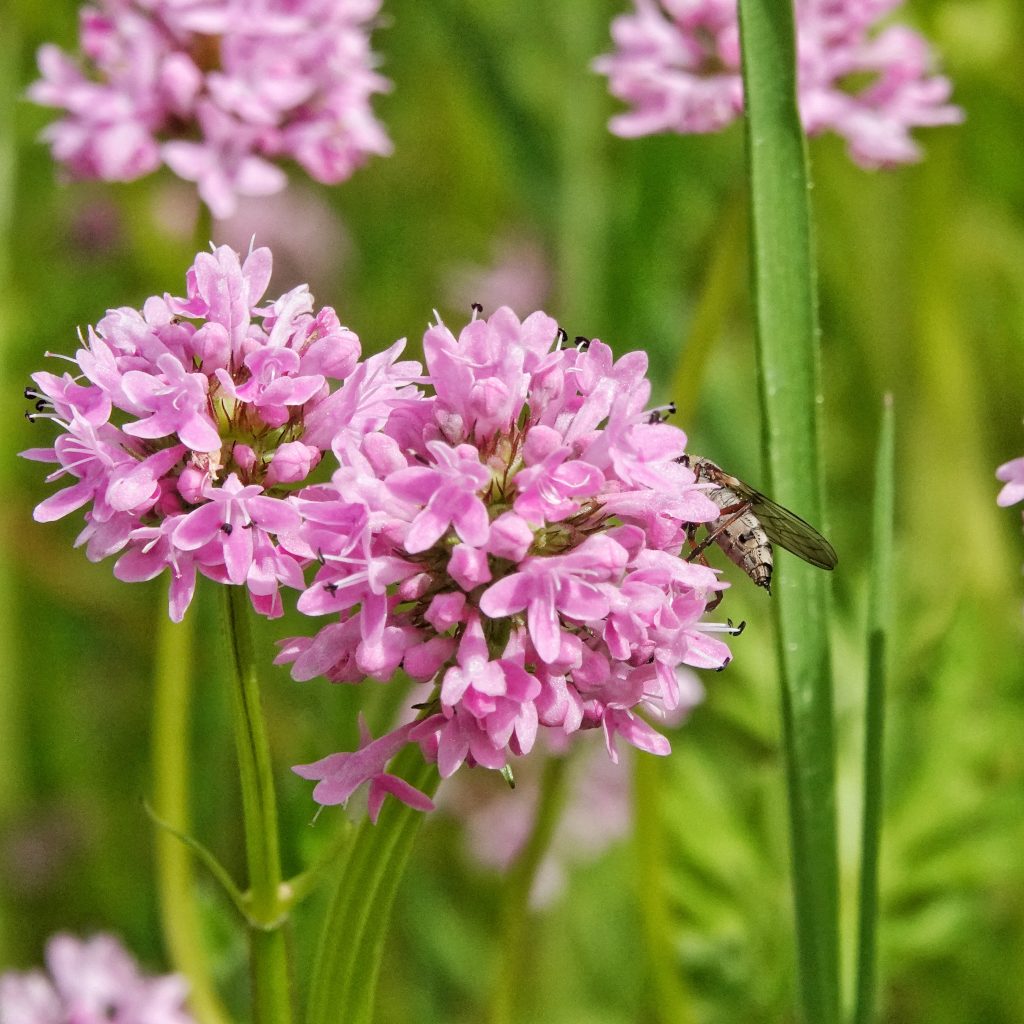
http://biology.burke.washington.edu/herbarium/imagecollection/taxon.php?Taxon=Plectritis%20congesta
https://wikis.evergreen.edu/pugetprairieplants/index.php/Plectritis_congesta#Uses
Plectritis congesta | Sea Blush | Wildflowers of the Pacific Northwest
https://www.nrcs.usda.gov/Internet/FSE_PLANTMATERIALS/publications/orpmcfs11574.pdf
